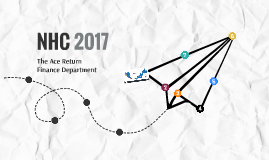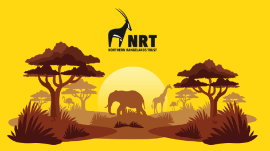Tennessee Trees and Wildlife
Transcript: 1. Field Border -Native to TN. -Most small game eat the mast, or fallen trees parts. -Chickadees make nests in these trees. -The lumber is often used in flooring and furniture. -It is commonly used as firewood because of it's dense, slow burning properties. -It is often used to refresh soil around farmlands. -Deer live mostly in forests, swamps, and open brushy areas. -Their food consists of twigs, shrubs, fungi, acorns, grass, and herbs. -Native to TN. -Commonly used in riparian zones and as cover for wildlife in extreme temperatures. -Small game and birds eat the seeds. -The lumber is not used as often because it is soft and spongy. -Not used in landscaping. Giant Swallowtail Eastern Cottontail (Acer saccharum) Eastern Hemlock Viceroy Eastern Redcedar Carolina Chickadee Small Game Trees and Wildlife (Juniperus virginiana) -Lives in forest clearings and edges, thorn scrub, brushy fields, roadsides. -Caterpillars eat hackberry. -Adults eat nectar from flowers of aster, dogbane, dogwood, goldenrod, and sweet pepperbush. -Not of any concern. Monarch (Liriodendron tulipifera) Gray Catbird (Betula nigra) Eastern Gray Squirrel (Carya tomentosa) 2. Filter Strip Sycamore (Platanus occidentalis) -Lives on rocky and sandy hillsides near streams or gullies, pine flats, towns, and citrus groves. -Caterpillars eat prickly ash and Common Rue. -Adults eat nectar from bouncing Bet, dame's rocket, goldenrod, and swamp milkweed. -Considered pests on citrus farms. 7. Controlled Burning (Acer negundo) Blue Jay -The White Ash is native to TN. -These trees are good shelter for wildlife. -Many animals feed off of the seeds of this tree. -The lumber is used in baseball bats and furniture due to its high resistance. -It is an ideal landscaping tree because it requires little maintenance. 10. Grass Planting -Lives along wooded streams, forest glades and river edges, wooded roadsides, towns. -Caterpillar eats sugarberries and hackberries. -Adults eat sap, rotting fruit, dung, and carrion. -There is no need to improve anything. (Pinus strobus) 6. Residue and Tillage Management (Ulmus americana) -Found in open woodlands, old orchards, riparian zones, wooded swamps, parks, cemeteries, and urban areas. -Eats insects and some small fruits. -Also thrives in today's environment. Management and distribution of crop and plant residue to provide cover and increase food availability. -Lives in fields, forest edges, and openings in forested mountains and valleys. -Caterpillars eat violets. -Adults eat dung and flower nectar from plants like milkweeds, ironweed, red clover, and butterflybush. -Lives in woodlands, swamps, riparian areas, open woods, parks, suburban and urban areas. -Eats insects, spiders, seeds, and fruits. -Additional birdhouses would conserve these bird's habitat by creating new ones. -Native to TN. -There is little food for animals, but this tree is home to many different species. -Birds live in the canopy, small game live in hollowed out parts of the tree, and large game bed under it's large branches. -The lumber is valued because of its hardness and is mainly used in furniture. -The wood duck can be found in wooded swamps, marshes, streams, beaver ponds, and small lakes. -Nest cavities can have openings as small as 4" across which makes it harder for the predators to enter -Wood ducks mainly eat seeds, fruits, insects, and other arthropods. When these foods aren't available they take to land and eat any kind of acorn or nuts they can find. -Lives most of its life in trees of the willow family. -Eats aphid honeydew, carrion, dung, and decaying fungi as caterpillars. -Full grown eat aster, goldenrod, joe-pye weed, shepherd's needle, and Canada thistle. -Repairing riparian zones will benefit them. -Native to TN. -Many birds and small mammals eat the berrylike cones of eastern redcedar. -Can be planted on polluted areas like surface mines, agricultural fields, and logging sites to renew the land. -Very aromatic which repels some insects. -Lumber used as fence posts, boats, closets, and chests due to it's resistance to termites. -Lives in heavily forested areas with thick scrub brush,wooded swamps, farmland, and rocky terrain. -Eats mostly small mammals, like rabbits, mice, rats, squirrels, and shrews, but also may eat deer, turkey, snakes, cats, and grass. -Regrowing thick forests and leaving hollow logs for mother bobcats will conserve their habitat. Ash -Found in forests edges,urban, and suburban areas, where large oaks are present. -Eats arthropods, acorns and nuts, fruits, seeds, small bugs. -Having more bird feeders could benefit this species. By: Grady Burnham and Caleb Reid -Native to TN. -Bark, seeds, foliage, and roots are eaten by wildlife. -Many types of birds, small game, and even black bear cubs live in these trees. -The lumber is commonly used in finish carpentry. -Used in landscaping as windbreaks and privacy barriers. http://www.fs.fed.us/database/feis/plants/tree/ White-tailed Deer White Admiral Planting or

















